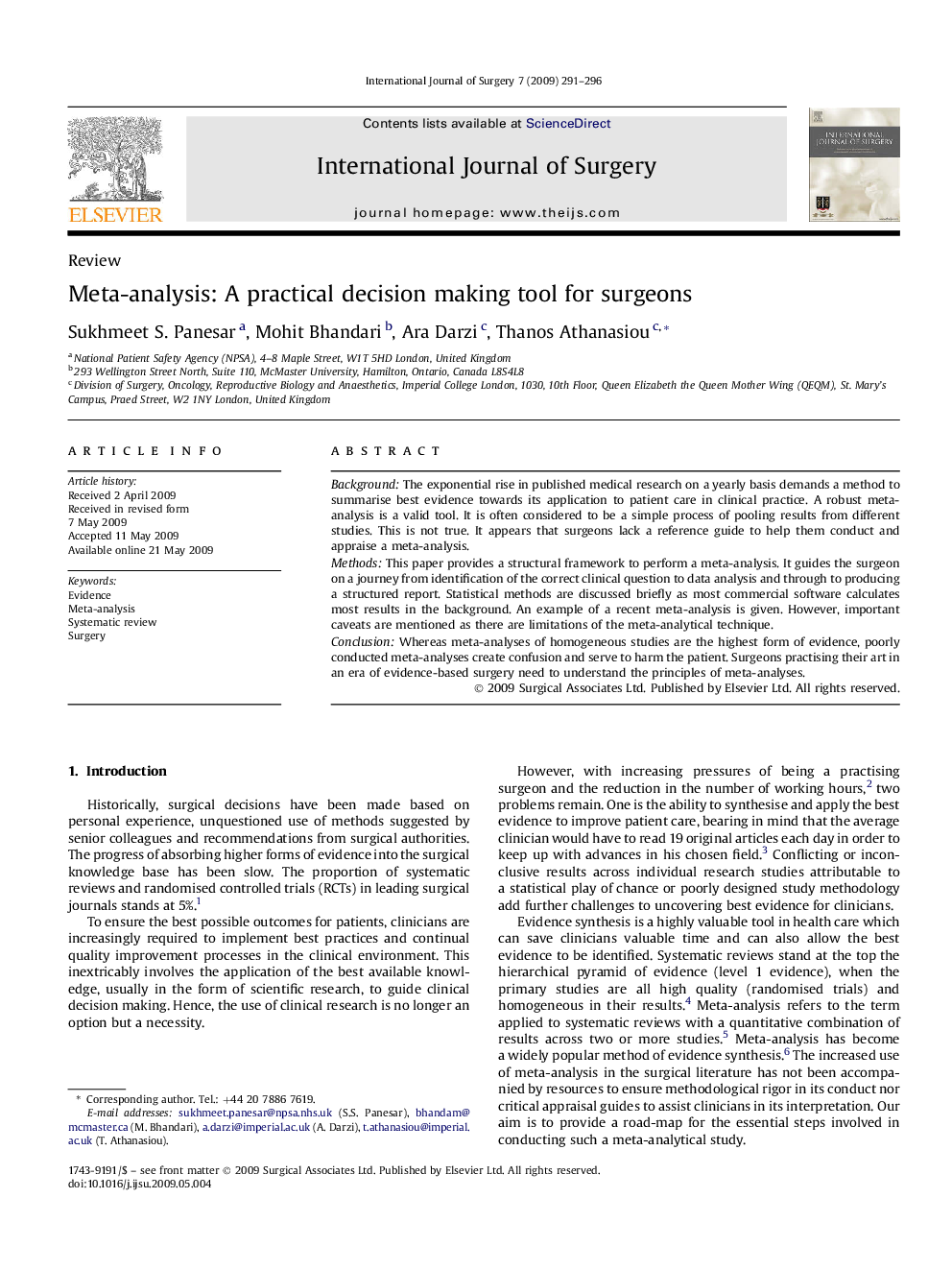| Article ID | Journal | Published Year | Pages | File Type |
|---|---|---|---|---|
| 4287962 | International Journal of Surgery | 2009 | 6 Pages |
BackgroundThe exponential rise in published medical research on a yearly basis demands a method to summarise best evidence towards its application to patient care in clinical practice. A robust meta-analysis is a valid tool. It is often considered to be a simple process of pooling results from different studies. This is not true. It appears that surgeons lack a reference guide to help them conduct and appraise a meta-analysis.MethodsThis paper provides a structural framework to perform a meta-analysis. It guides the surgeon on a journey from identification of the correct clinical question to data analysis and through to producing a structured report. Statistical methods are discussed briefly as most commercial software calculates most results in the background. An example of a recent meta-analysis is given. However, important caveats are mentioned as there are limitations of the meta-analytical technique.ConclusionWhereas meta-analyses of homogeneous studies are the highest form of evidence, poorly conducted meta-analyses create confusion and serve to harm the patient. Surgeons practising their art in an era of evidence-based surgery need to understand the principles of meta-analyses.
